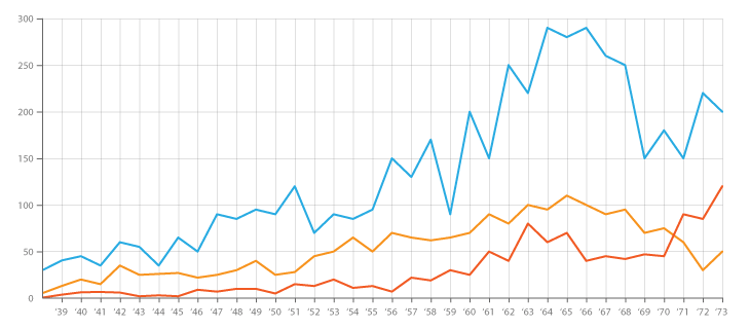It is very hard to resist the temptation of settling down once your CJM is built. Why hustle? Your lovely map is already hanging on the wall bringing joy and sense of accomplishment to you and all the stakeholders. The job is done. Get a candy, everyone! Unless… this is a very bad idea. No matter how awesome and detailed your personas and maps are you can’t just call it a day and enjoy your double-cheese pepperoni. Okay, you can have your pizza, but after that get back to work.
Customer Journey Mapping cannot - I repeat - it cannot be a one-time project. It is all about evolution and constant improvement. If you choose to do journey mapping, you better stick to your guns. For as long as your business is in the game there has to be journey mapping all along. It must evolve with your business, period. The question is what you should do to keep CJM up and running so your UX won’t get stuck in the mud. UXPressia is always here to help you out, so here are a few suggestions.
Implement improvements
It goes without saying, but I’ll say it. Customer journey mapping is not an exercise activity, it’s a combat weapon and you should use it accordingly. Once your map is complete, you take all the insights and ideas and start fixing all the weak spots you discovered. Now, that seems quite vague and won’t go for a practical suggestion. So let’s see what exact steps you can take.
- Put someone in charge. Implementing changes requires a strong leadership and that’s why you need to find someone who is going to be the driver of changes. It can be more than one person, but there can’t be a whole team of leaders. And don’t forget to enlist the management – getting support from executives will be all the better for CJM practicing.
- Set exact steps. The words “UX improvement” sound good, but they remain puffs even after you’ve built a journey map and identified weak spots. What you need is an actual list of exact actions you’ll take to fix this and that. Training front office staff? How? What sort of training? Come up with a solid list of bullseye points and only then can you start delivering changes.
- Define processes. Now it’s time to decide on how you will deliver changes. You can’t just start doing everything at once, that will be a mess and most likely you’ll end up in a worse situation than you were before trying CJM. Take time to think about the order in which you will implement improvements as well as all the procedures involved.
Assess Effectiveness and make Changes

Photo: http://www.datavizcatalogue.com/
Now that you started fixing your UX you can clearly see whether particular changes are taking effect or not. It can happen so that theoretically something looks like a perfect candidate for improvement. However, when it comes to practice, you just hit a wall. It might be that you’ve been looking in the wrong direction.
It also might be due to the fact that in order to fix something you have to dig deeper and turn everything upside down. Poorly designed UX can be such a pain to fix. Of course, designing user experience with CJM from the very beginning would be a way out. Ah, this good old you-shoulda-done-that-son thing is no good here. Instead, you can be creative and find a compromise. Or burn everything to ashes and start from scratch (a word of advice: Don’t. People probably won’t like it).
Here’s another scenario. You’ve come up with a list of improvements and now you’re implementing them one by one. And here they are – insights popping up everywhere. Where they’ve been all that time? Anyway, it’s great to have them even if they’re late.
Both scenarios mean that your CJM needs some more work. Go back to it and make changes to your map according to the findings.
Update your map

Photo: https://codesvip.com/
Your customer journey maps have to evolve side by side with your business. The world changes, your business evolves and so do the processes within your organization. The best way to keep up with it is to review and update your maps every once in a while.
You can do a review when something inside your company changes. But you can also do that when nothing seems to change. It may look like an excessive thing to do, but trust us it’s not. You never know what can come to the surface when you expect it the least.
Keep maps up-to-date so when it comes to reviewing and redesigning UX, your maps aren’t obsolete and you won’t have to waste more time rebuilding them completely.
To sum it up: implement changes to your UX according to the findings, assess the effects they take and change your map if there’s a need. And don’t forget to update maps every now and then. Follow our suggestions and your maps won’t get dusty and useless over the course of time. Our last bit of advice for you is to check out our CJM online tool where you can map customer journey with ease and fun! And we’ll see you later, happy mapper!





